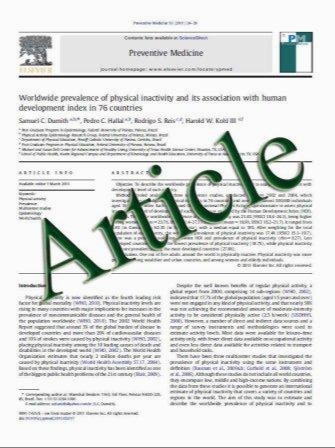Anterior versus posterior surgery for multilevel cervical myelopathy, which one is better? A systematic review
- نوع فایل : کتاب
- زبان : انگلیسی
- مؤلف : Tao Liu • Wen Xu • Tao Cheng • Hui-Lin Yang
- چاپ و سال / کشور: 2010
Description
The objective of the study is to perform a systematic review to compare the clinical outcomes and complications of anterior surgery with posterior surgery for multilevel cervical myelopathy (MCM). MEDLINE, EMBASE databases and other databases were searched for all the relevant original articles published from January 1991 to November 2009 comparing anterior with posterior surgery for MCM. Subgroup analysis was performed according to the follow-up years. The following end points were mainly evaluated: final follow-up JOA (Japanese Orthopaedic Association) scale, recovery rate and complication outcomes. Ten articles fulfilled all inclusion criteria. For multilevel CSM patients, the final follow-up JOA score for the anterior group was significantly higher than the posterior group (p\0.05, WMD 0.83 [0.24, 1.43]) in the ‘follow-up time B5 years’ subgroup, but had no significant differences in the ‘follow-up time [5 years’ subgroup (p[0.05). The recovery rate for the anterior group was significantly higher than the posterior group (p\0.05, WMD 10.08 [1.39, 18.78]) in the ‘follow-up time B5 years’ subgroup. No study reported the recovery rate for the follow-up time [5 years. For multilevel OPLL patients, the final follow-up JOA score and recovery rate for the anterior group were both significantly higher than the posterior group in the ‘follow-up time B5 years’ subgroup (p\0.05, WMD 2.50 [0.16, 4.85]; p\0.05, WMD 29.48 [29.09, 29.87], respectively). One study [31] which mean follow-up time was 6 years was enrolled in the ‘follow-up time [5 years’ subgroup. The results showed there was no significant difference in final follow-up JOA score and recovery rate between anterior and posterior group for patients with occupying ratio of OPLL \60% (p[0.05), while in patients with occupying ratio C60%, the final follow-up JOA score and recovery rate of anterior surgery were both superior to that of posterior surgery (p\0.05). For both multilevel CSM and OPLL patients, the complications for the anterior group were significantly more than the posterior group in the ‘follow-up time B5 years’ subgroup (p\0.05, OR 7.33 [2.96, 18.20] for CSM patients; p\0.05, OR 4.44 [1.80, 10.98] for OPLL patients), but were similar to the posterior group in the ‘follow-up time [5 years’ subgroup (p[0.05). In conclusion, anterior surgery had better clinical outcomes and more complications at the early stage after operation for both multilevel CSM and OPLL patients. At the late stage, posterior surgery had similar clinical outcomes and complications to anterior surgery for CSM patients, and OPLL patients with occupying ratio of OPLL\60%. While for
Eur Spine J (2011) 20:224–235 DOI 10.1007/s00586-010-1486-7 Received: 15 April 2009 / Revised: 23 May 2010 / Accepted: 11 June 2010 / Published online: 27 June 2010


